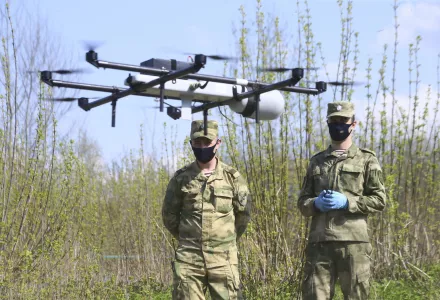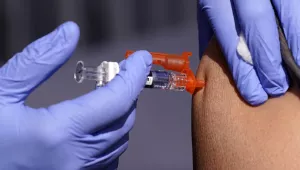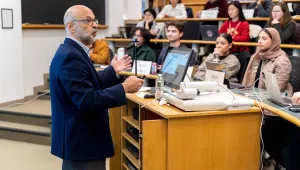
Introduction
The COVID-19 crisis arrived suddenly and seemingly everywhere. All levels of government scramble to mitigate the health threat and the astounding disruptions to people’s lives and livelihoods. There is pressure to do something and quickly. As business leaders and public officials plan their response, they struggle to identify the proper role for emerging technologies. One of these is drones, a technology that got its start in military and security programs but over the last decade has increasingly been repurposed for civilian and commercial uses.
In any crisis, time, awareness and managerial focus are limited resources. As those dealing with the pandemic consider what role, if any, drone technology should play in their response, five questions are worth considering on any proposed use case for drones.
- What is technically possible given the state of the technology and the industry?
- Are some COVID-19 use cases touted by parts of the drone industry able to do what is claimed?
- Are there easier and cheaper alternatives?
- Just because it can be technically done, should it be done and what are the costs and trade-offs in doing so?
- Are there use cases which have not been fully explored but are achievable with the technology available now?
The Industry and State of Technology
In the United States the health crisis has spurred the government to put more resources behind efforts to open more airspace to the drone industry. For some background, while in previous years there was considerable enthusiasm for repurposing drone technology to broad civilian and commercial purposes, the industry and government regulators were slow to find common ground which would open the airspace broadly and rapidly enough to meet commercial expectations. Early, private sector enthusiasts approached the drone industry from a Silicon Valley model in which the hand of regulation would be light-to-non-existent. Instead, the trend in government has been to see drones as a sub-set of the heavily regulated aerospace industry and to proceed accordingly.
While there remains considerable interest by regulators in the U.S. and abroad to make sure the skies are kept safe, there has been an increase in the resources necessary to speed-up the review process for regulations to allow drones to be used more broadly and for more purposes than they have been in the recent past. This has set off considerable interest by private enterprise to accelerate their own plans for using this technology for its full potential, including in ways that might help in a crisis such as this one. It remains to be seen if this new process consideration from regulators gives private industry enough time to scale up all possible use cases so they would be broadly available for this present crisis.
One economic casualty of the crisis is likely to be the dominant position of the Chinese drone industry, especially in the United States. It is increasingly clear that Beijing’s dominance in this field will be challenged by firms located in other countries which are uncomfortable using Chinese-made drone systems given deteriorating relations with the People’s Republic.
How might drones be employed in the crisis?
There are a number of use cases. Some are more mature than others but none have been used at the scale a crisis like this might require. For each case we will describe the technical feasibility and other planning factors to consider.
Public Health (Disinfectant Spraying)
Prior to the crisis, drones have been successfully used in agriculture and pest eradication. Since the beginning of the pandemic there have been many instances of agricultural sprayer drones refitted to spread disinfectant liquids designed to kill the virus. Much of this was done in China but the technique has been used in other countries as well. Similarly, an indoor variant is being explored which would use ultraviolet light to kill the virus.
While the technology is mature enough to quickly spray large public areas such as sports stadiums, train stations and other heavily trafficked areas, it is unclear just how effective it is at stopping the spread of this disease. The technique targets physical surfaces and disease specialists are still unclear how much the virus spreads from contact transmission versus airborne passage from an infected person to others (and much of that may take place indoors where sprayer drones are less practical). What scientific literature that does exist indicates that, to date, there is no scientific evidence yet that spraying reduces transmission rates.
As for ultraviolet light used indoors via special purpose drones, it is unclear how quickly this could scale, if it is more economical than using human beings to the same purpose and could it be broadly employed without risking inadvertent exposure to human beings to the light.
Public Health (Temperature Scanning)
Some within the drone industry suggest it is possible to take a human being’s temperature from a drone and at a considerable distance. If true, this would seem to offer a way to assess temperatures at scale, quickly and perhaps in large public venues. Putting aside for a moment the privacy issues associated with such technology, there is little engineering evidence this technique can work in the way it is commonly imagined.
Sensors capable of reading skin temperature and small enough to put on drones come with severe limitations. At any distance greater than a few meters most sensor technology of this sort faces a number of obstacles to get consistently reliable data. There is no peer reviewed, publicly available information which suggests the technical barriers able to overcome these issues have been found. Any consideration by public officials to employ drone technology which claims to be able to do this should be subjected to thorough due diligence.
Delivery Drones
Drones as supply vehicles have successfully been used in humanitarian situations for years and several NGOs have extensive experience employing them. Large U.S. corporations have studied and invested heavily in this space over the years and the technology to do much of this already exists. To date, in the United States this option has not been used at scale, in large part due to the long, regulatory process required to safely integrate large numbers of delivery drones into the national airspace.
While there has been greater openness by regulators to open the airspace to the use of delivery drones as a way to increase social distancing in some situations, it is unclear if this can happen in time to make a practical difference for this particular crisis. There have been suggestions to use delivery drones to carry medical supplies and samples, perhaps COVID 19 test kits, to and from medical facilities. Currently, this use case has two hurdles. One, it is frequently not as economical as ground delivery and two, many medical supplies are considered hazardous material (HAZMAT) which limits the options, in the U.S., for federally approved carriers and significantly complicates letting such items move easily through the airspace.
While delivery and transportation using drones is almost certainly a growth industry and can improve social distancing, it will probably not mature and be accepted at scale in time to meet this particular crisis.
Distance Policing (Surveillance)
Drones have been used for years in military and security operations and there are many public safety departments in the United States and elsewhere which have nascent drone programs. This is the most mature of the use cases and it is possible to use currently available technology to augment public safety and police work and do so in a way that adheres to many social distancing guidelines. This is also the use case which can cause the greatest anxiety with the general public.
Compliance Enforcement
There have been attempts in the U.S. and abroad to use drones with speakers to both engage with the public and to enforce social distancing rules. Drones, flown under human supervision, can allow public safety officials to broadcast messages or converse from a distance with individuals or crowds. How effective this use case depends on public acceptance of the technique and there is not enough data to indicate where the public stands on this particular issue.
Compliance and Crime Monitoring
Drones excel at wide area surveillance and the current technology exists to allow public safety officials to easily monitor compliance for matters such as social distancing. This is not necessarily to say the best response is to then use that information compel the public to change their behavior but it may be useful to policy makers to know just how realistic it is to expect broad compliance by civilian populations with such novel rules.
Situational awareness obtained at a distance and without direct interaction by law enforcement officials may have other benefits. At times of heightened anxiety among the public, there may be situations where public safety officials would rather observe what is going than immediately sending officers into what might be highly combustible situations that their mere presence might exacerbate.
Drone surveillance can also be used to deter and monitor for criminal activity which may increase during prolonged economic downturns as is happening now.
Civil Liberties
Any broad use of drones for public safety mission will face public acceptance challenges in many countries. Key to being able to obtain public acceptance is to clearly explain to the citizenry the benefits the technology can bring and offering a clear vision about the limits and safeguards on its use. There should also be a detailed plan as to how oversight of these programs will work. At minimum, this should include clear rules to be followed inside the public agencies which operate the drones as well as creating independent oversight which has broad and continuous access into how the technology is being used.
Hudson, Bernard , Faine Greenwood and Christopher Hewlett. “Public Policy Roles for Drones During the COVID-19 Crisis.” June 2020





